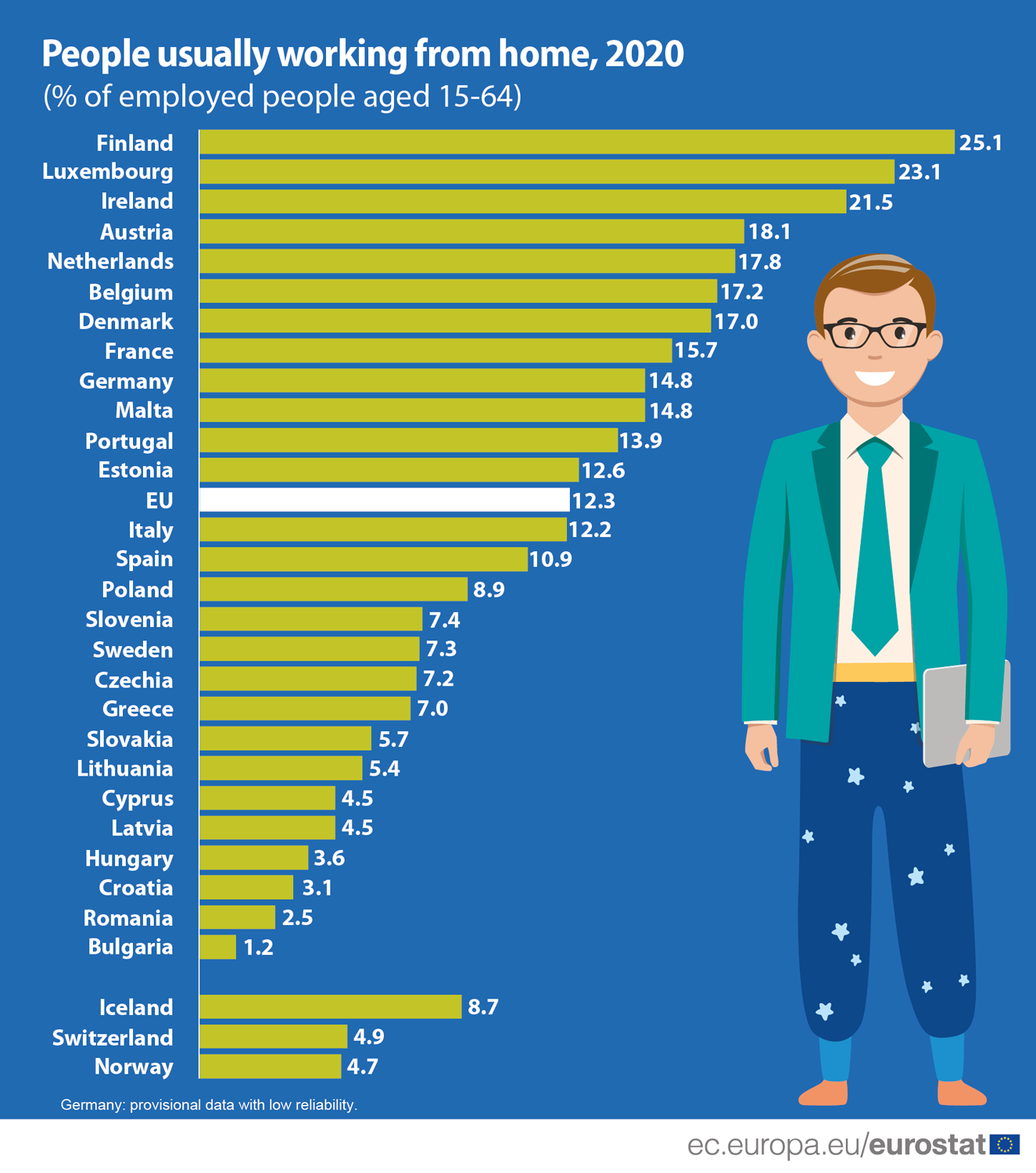News
17 May 2021 |News
How usual is it to work from home?

How usual is it to work from home? (Photo: ec.europa.eu/eurostat)
The social distancing measures that were introduced as a response to the COVID-19 pandemic forced many people to work from home. In 2020, 12.3% of employed people aged 15-64 in the EU usually worked from home, although this share had remained constant at around 5% over the past decade.
In previous years, the share of self-employed persons who reported that they usually work from home has been consistently higher than the share of employees in the same situation. However, the gap became smaller in 2020 as the share of employees who usually work from home increased from 3.2% in 2019 to 10.8%, while the share for the self-employed increased to a smaller extent: from 19.4% in 2019 to 22.0% in 2020.
More women than men work from home
There are different trends according to the age and sex of workers when it comes to home working. In 2020, a higher share of women (13.2%) reported that they usually worked from home than men (11.5%).
Compared with other age groups, younger people were less likely to work from home in 2020: only 6.3% of those aged 15-24 reported that they usually worked from home, compared with 13.0% of those aged between 25-49 and 12.4% of those aged 50-64.
Highest share of people working from home in Finland, Luxembourg and Ireland
Finland topped the list of the EU Member States for home working, with 25.1% of employed people usually working from home in 2020. Finland was followed by Luxembourg (23.1%) and Ireland (21.5%). In contrast, the lowest shares of home-workers were reported in Bulgaria (1.2%), Romania (2.5%), Croatia (3.1%) and Hungary (3.6%).
This news is published on the occasion of the World Telecommunication and Information Society Day (ITU) on 17 May.
(Source: ec.europa.eu/eurostat)
More information on the topic available at Eurostat





